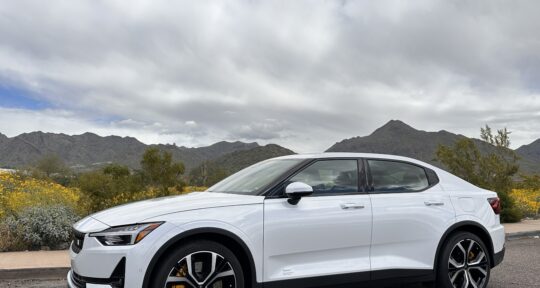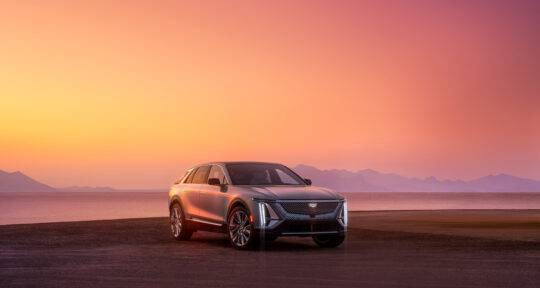Electric vehicles are not only here to stay—they’re the future of road travel. With companies like Tesla pioneering the EV movement, expect to see other major car companies follow suit. Even car rental companies like Hertz now offer EV rentals with Tesla vehicles.
With more EVs on the road, you may wonder if the infrastructure exists to charge all of these cars. If you’ve ever visited a Tesla Supercharger station in Los Angeles around rush hour, you’ll see a line of cars waiting to charge.
If the thought of waiting to charge your vehicle is a turn-off, fret not—you’ll be surprised at your options. Don’t set your expectations too high; progress is being made, but electric vehicle charging is still not as convenient as it could be. Here are a few resources to help you navigate charging your electric vehicle on a road trip.
Related: Interested in buying an EV? Here’s where to start and what to look for
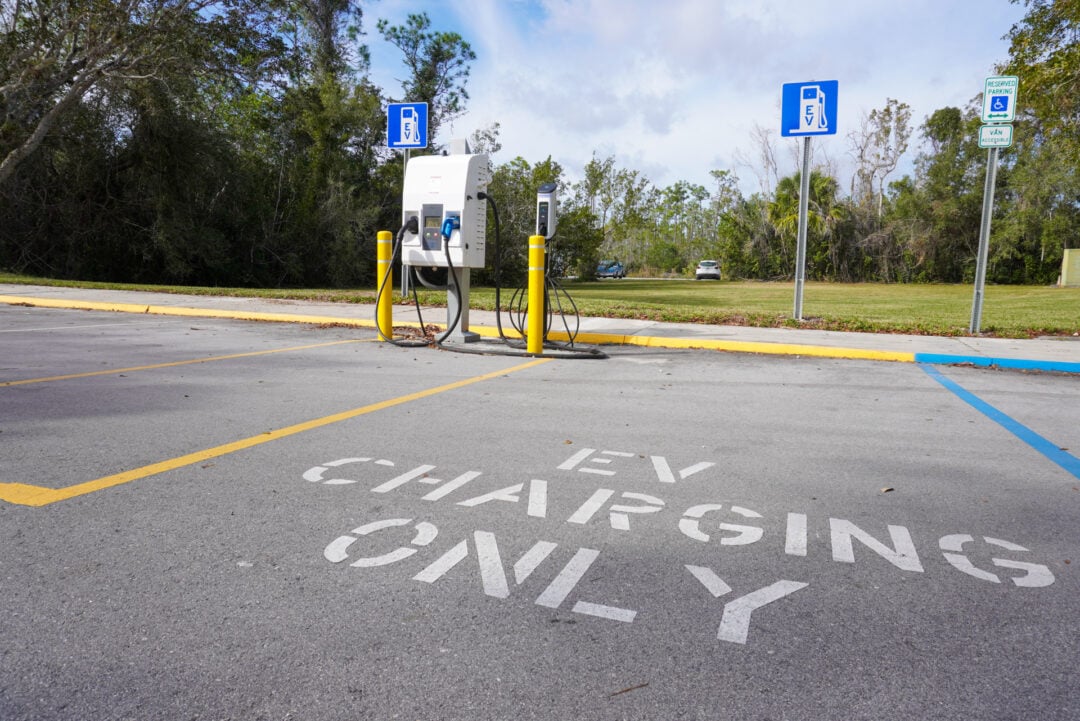
Types of EV chargers
There are three levels of RV charging: Level 1, Level 2, and Level 3 (which includes Tesla’s Superchargers and DC fast chargers). Always look for the highest level of charging available, since these will charge your vehicle faster.
Some of the more common charging networks include Tesla, ChargePoint, Electrify America, Blink, and EVgo. If you’re a frequent user of one specific network, signing up for a membership can mean discounts and/or easier payment.
Tesla Supercharger
Tesla’s proprietary charging network is the best-developed charging infrastructure in the U.S. Superchargers range from 75 kilowatts (kW) V1 chargers to 120kW and 150kW V2 chargers, all the way up to beastly 250kW V3 chargers. Rates vary by location, but you can find out the cost by selecting the charger on your Tesla screen.
Pros:
- Very fast charging.
- It takes roughly 20 minutes to increase your battery from 20 to 80 percent with a V2 or V3 charger. V1 chargers are older and typically found at shopping malls, so customers can charge while they shop.
- There’s a vast network of Superchargers scattered throughout the U.S.
Cons:
- Superchargers can only be used by Teslas.
- Fast-charging any type of battery can cause degradation.
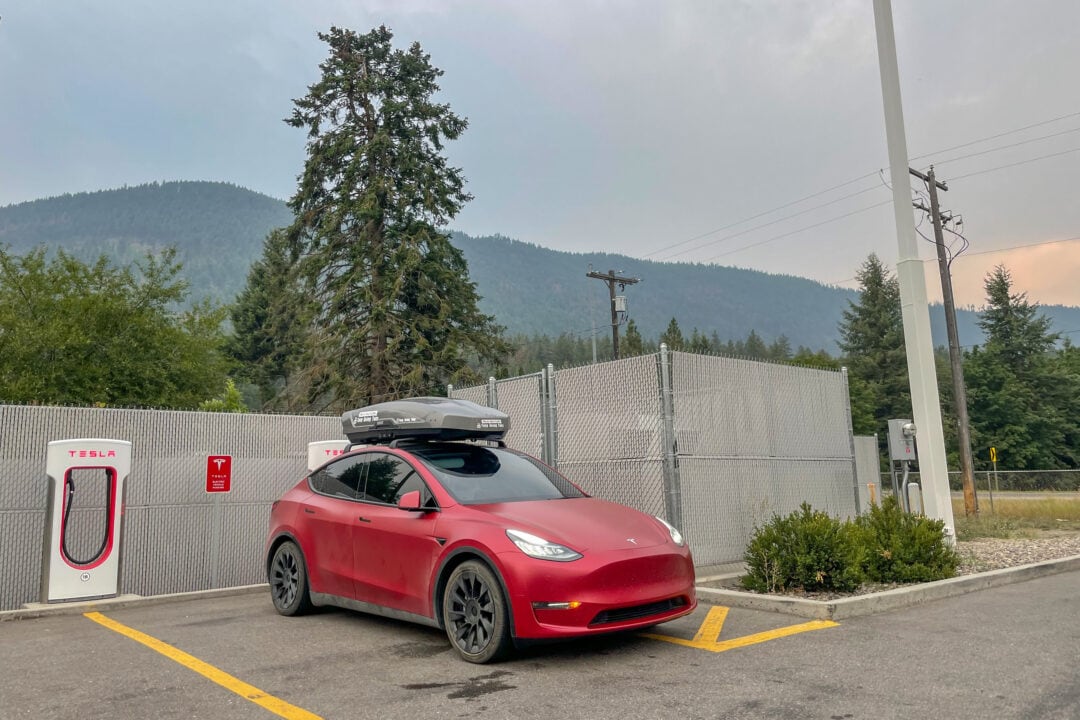
Level 3 or DC fast charger
Outside of Tesla’s Supercharger network, DC fast chargers are the fastest available charging option. These can provide up to 250 miles of range in 1 hour, and can typically get your battery level to about 80 percent in 30 to 60 minutes.
Pros:
- Charges your battery quickly.
- DC fast chargers are typically used for long-distance driving and can be found at gas stations and along highway corridors.
Cons:
- These high-voltage direct current chargers are expensive to purchase and typically cannot be installed at home.
Level 2
Level 2 chargers are commonly found in public and commercial spaces and in more remote locations. A full charge can take about 8 hours, so these are suitable for overnight charging (for example at a hotel) or during the workday.
Pros:
- Abundant network—you’ll find them in most cities.
- Some are free to use; these are normally found at hotels or businesses with designated EV parking spots.
- Chargers are typically located near shopping centers or at workplaces, so you can charge while running errands or working.
- Can be installed at home.
Cons:
- Slower charging; it can take a long time to get to a full charge.
Level 1
Level 1 is the slowest type of charging—a full charge can take up to 24 hours (or more). However, charging can typically be done using a regular 120-volt household outlet and an adapter for your car, which makes this a widely available charging type that can be used at home or as an emergency backup.
Pros:
- Can be done from home, using a regular wall outlet.
- Works well for hybrid EVs, since these have smaller batteries.
Cons:
- Very slow—it only adds about 3 to 5 miles of range per hour.
How to find EV chargers
Now that we’ve identified the types of EV chargers out there, how do you find them?
- PlugShare is a community-backed app where other EV drivers can leave feedback and report broken chargers on listings. It shows all available chargers near your location as well as the price of charging. It’ll also show you what adapters you’ll need based on the vehicle you’re driving.
- Roadtrippers lists EV chargers along your route. Since you’re already mapping out your trip, you can conveniently add stops at chargers along the way.
- Your car’s built-in navigation system can help you find chargers near your location or along your route.
- You can also search for chargers on Google Maps.
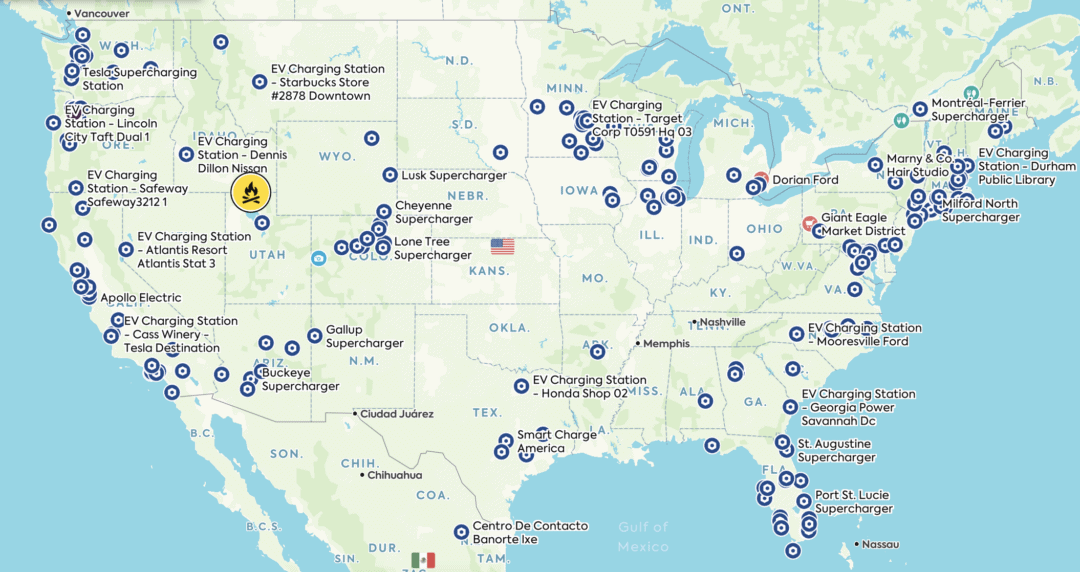
EV charging at campgrounds and national parks
As EVs increase in popularity, so is car camping with an EV. Campgrounds and national parks are starting to meet this demand by offering their own chargers.
Most campgrounds with RV campsites offer electric hookups, meaning that you can plug your car into the 120-volt or 240-volt outlets. National parks are starting to integrate more EV chargers as part of the Green Parks plan, and state parks are also starting to expand their EV charging station offerings.
According to the Edison Electric Institute, it’s estimated that there will be more than 18 million EVs on the road by 2030. As part of the new Bipartisan Infrastructure Law, nearly $5 billion will be dedicated to building out a national EV charging network over 5 years. Although EV charging isn’t as reliable as filling up at a gas station yet, it’s becoming easier and more available. In the meantime, rest assured you won’t have much difficulty charging your vehicle as long as you use supporting apps and plan your route accordingly.

